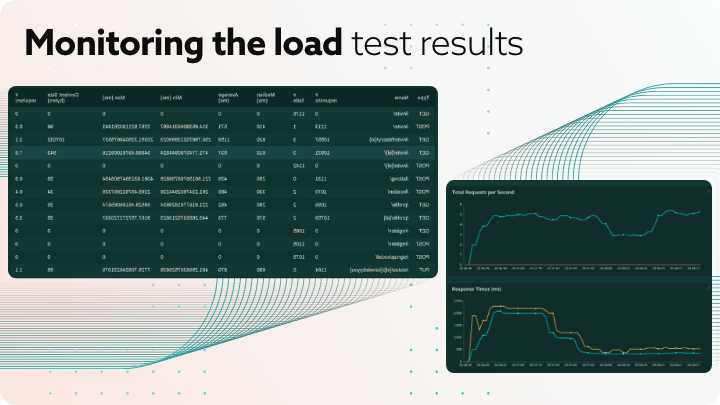In the dynamic reality of custom healthcare software development, it’s crucial to ensure the robustness and reliability of applications under diverse load conditions.
Load testing, a type of performance testing, simulates real-world load on software, applications, or websites. It helps us understand how our application behaves when multiple users access it simultaneously. This, in turn, is essential for identifying and mitigating potential performance bottlenecks before they impact our end-users.
The insights gained from monitoring and inspecting results provide direct indications of where bottlenecks are. When used in conjunction with hardware monitoring tools, we can quickly and precisely identify potential problems in our applications and infrastructure. This proactive approach allows us to address issues before they escalate and ensure optimal performance and user satisfaction.
As the demand for high-performing, resilient applications continues to grow, integrating effective load testing strategies into the development workflow has become increasingly important.
This article explores the significance of load testing and the tools available to support this vital aspect of software quality assurance.
Recognizing this need, our company has recently integrated a powerful load testing tool, locust.io, into our workflow.
Why Locust.io?
After careful consideration, we chose locust.io for its simplicity, flexibility, and scalability. Locust.io allows us to write test scenarios in Python, making it highly customizable.
It also supports distributed load testing, enabling us to simulate millions of simultaneous users.
Automation
One of the significant challenges with using the locust.io library for load testing is defining the load shape and executing the tests, which often require programming skills.
We addressed this by building our own automation tool that prepares the load shape and executes the tests using locust.io. This means that defining the load shape is no longer a task exclusive to programmers; anyone can do it.
Moreover, the construction of the load shape tool can be achieved in several ways. We provide options to present JSON formatted files, sitemaps, or use automation tools for some of the frameworks we work with. This flexibility further enhances the accessibility and user-friendliness of using the locust.io library for load testing.
This automation has truly made an impact. It is now being used in projects more frequently than ever before.
Seamless Integration with CI/CD Pipelines
Our automation tool is designed with flexibility in mind, capable of seamless integration into our CI/CD pipelines. This integration enables us to incorporate load testing into our regular deployment process, thereby ensuring that each modification is performance-validated before it reaches the production stage.
Moreover, the tool provides the convenience of manually triggering tests on demand thus offering us the adaptability to conduct load testing as needed.
It’s important to note that while the tool can be smoothly integrated with pipelines, it is not strictly bound to them. The tool retains its functionality independently, providing the option for detachment when necessary.
This flexibility ensures that our testing processes can adapt to a variety of project requirements.
Monitoring and Interpretation of Results
Before everything else, it’s important to note that a user interface (UI) is provided for all team members to view the results of the tests. This feature ensures transparency and accessibility, allowing everyone on the team to stay informed about the performance metrics.
One of the key benefits of our approach is that it allows all team members to interpret and monitor the load test results. This promotes a shared responsibility for application performance and encourages teamwork across different functions.
In conclusion, the integration of locust.io into our workflow has transformed our approach to load testing.
It has not only automated the process but also made it accessible to all team members, enabling everyone to participate in ensuring the performance of our applications.















